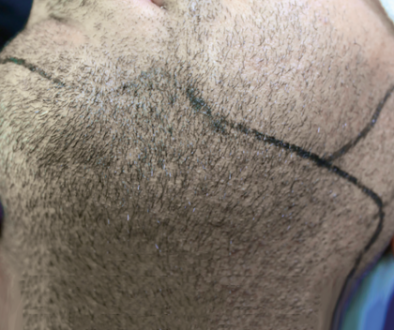Hair Transplant Scar Revision: Best Suturing Techniques? Subcuticular vs. Fascial Closures
This question, from a member of our hair loss social community and discussion forums, was answered by Coalition hair transplant surgeon Dr. Glenn Charles:
I visited few hair transplant surgeons for a scar revision and two that were recommended on this forum had told me these two different deep suture techniques. So I ask you and maybe a physician can explain this. What is the difference (if there is one) between a subcuticular closure technique and a fascial closure technique? Which technique is better/stronger for a scar from ear to ear?
 There are a lot of different suturing techniques that can be used in hair transplantation. Doctors also use different names to describe the same techniques. The “sub Q” technique is generally a buried absorbable suture that is used to approximate the wound margins and bury some of the tension deeper. It is surface tension (tension at the wound edges) that is a major factor in the formation of scar tissue.
There are a lot of different suturing techniques that can be used in hair transplantation. Doctors also use different names to describe the same techniques. The “sub Q” technique is generally a buried absorbable suture that is used to approximate the wound margins and bury some of the tension deeper. It is surface tension (tension at the wound edges) that is a major factor in the formation of scar tissue.
The facial closure technique is most likely a very fine suture that is used under minimal tension that helps to leave a smaller scar. A trichophytic closure can be used in combination with both of the above techniques.
I generally use a two layered closure (deeper absorbable suture with no buried knots and a finer surface suture with two knots that needs to be removed 7-12 days post-op) and add the trichophytic technique in certain cases.
Dr. Glenn Charles
—-
David (TakingThePlunge)
Editorial Assistant and Forum Co-Moderator for the Hair Transplant Network, the Coalition Hair Loss Learning Center, and the Hair Loss Q & A Blog.
To share ideas with other hair loss sufferers visit the hair loss forum and social community
Get Proven Treatments at the Best Prices by visiting our new online hair loss treatment shop.
Watch hair transplant videos on YouTube
Technorati Tags: hair loss, hair transplant, scar revision, hair transplantation, trichophytic closure



